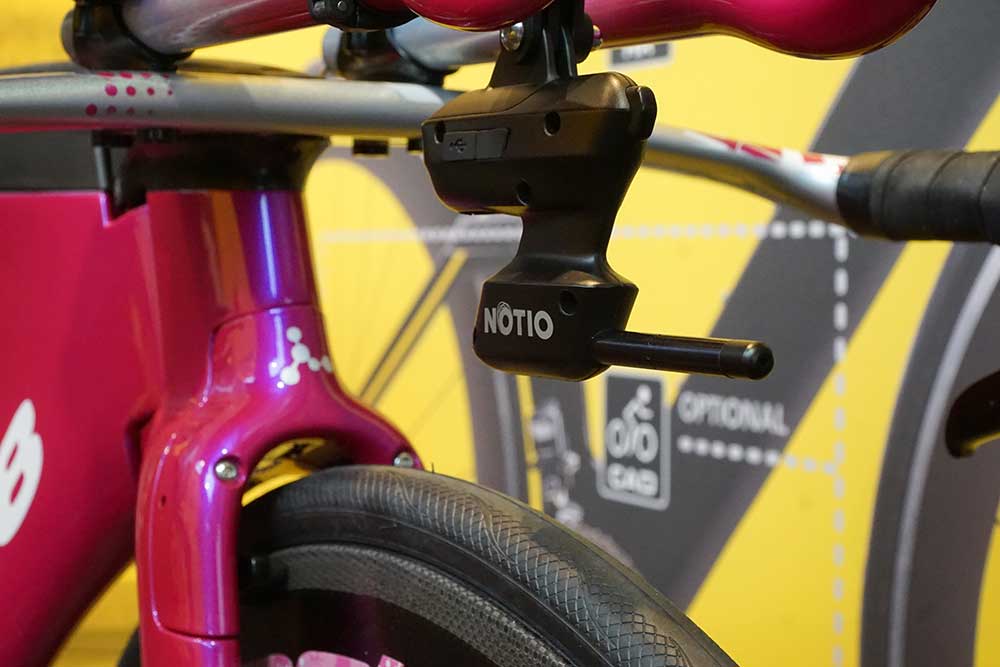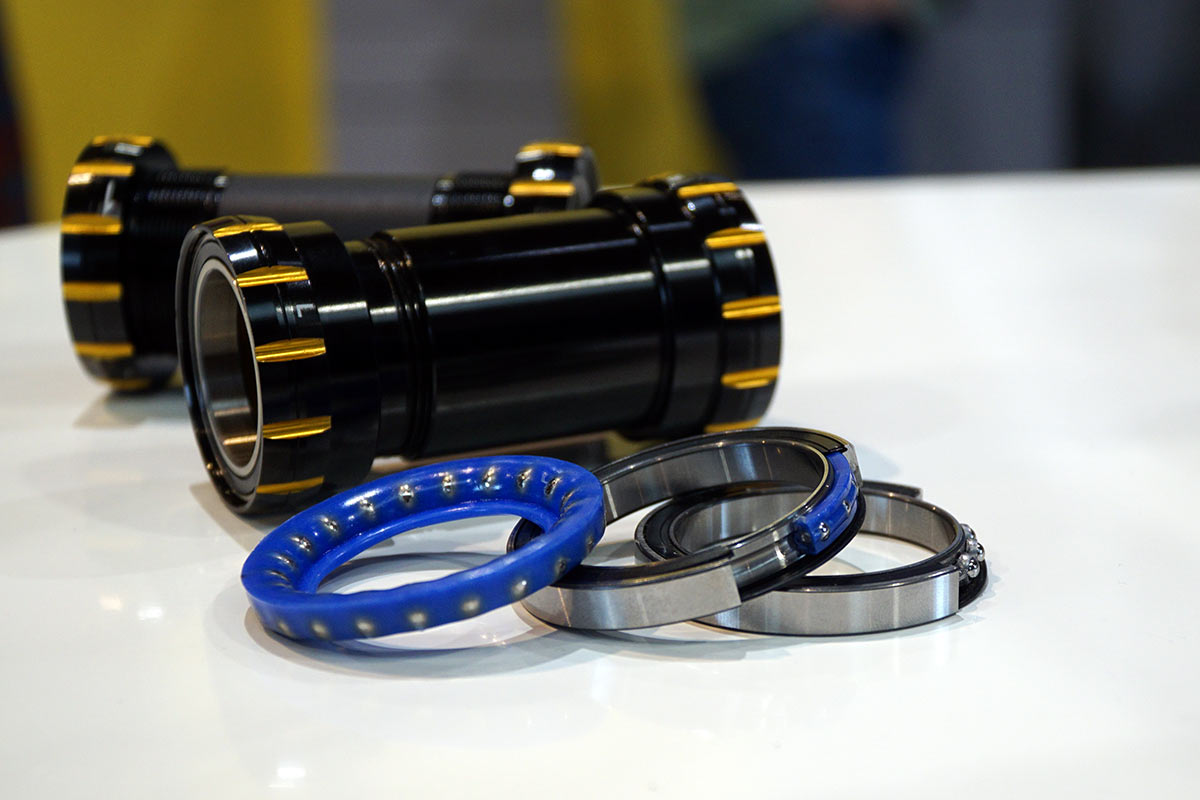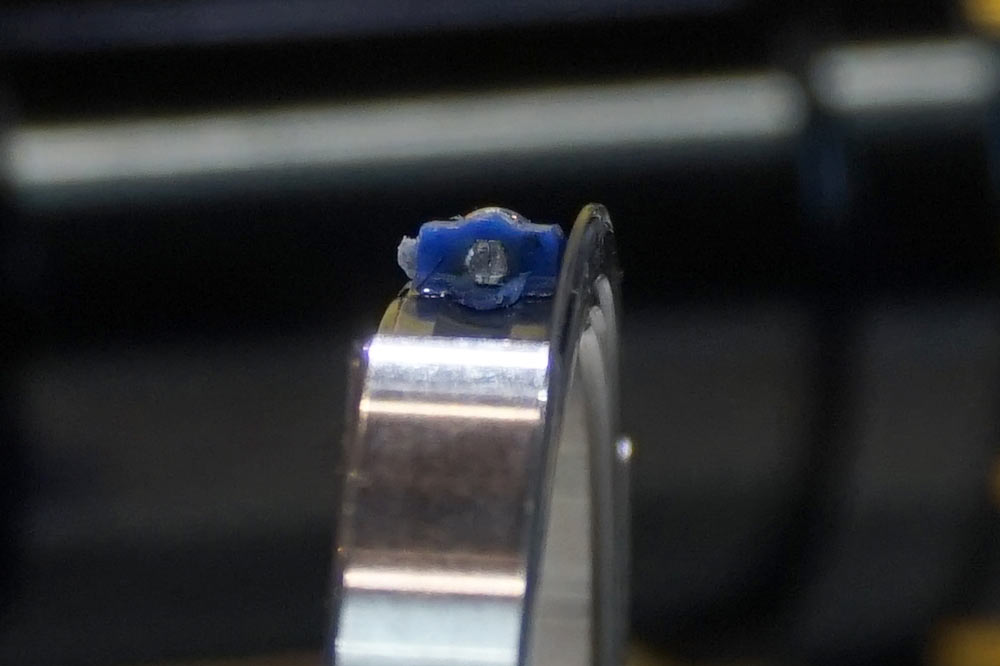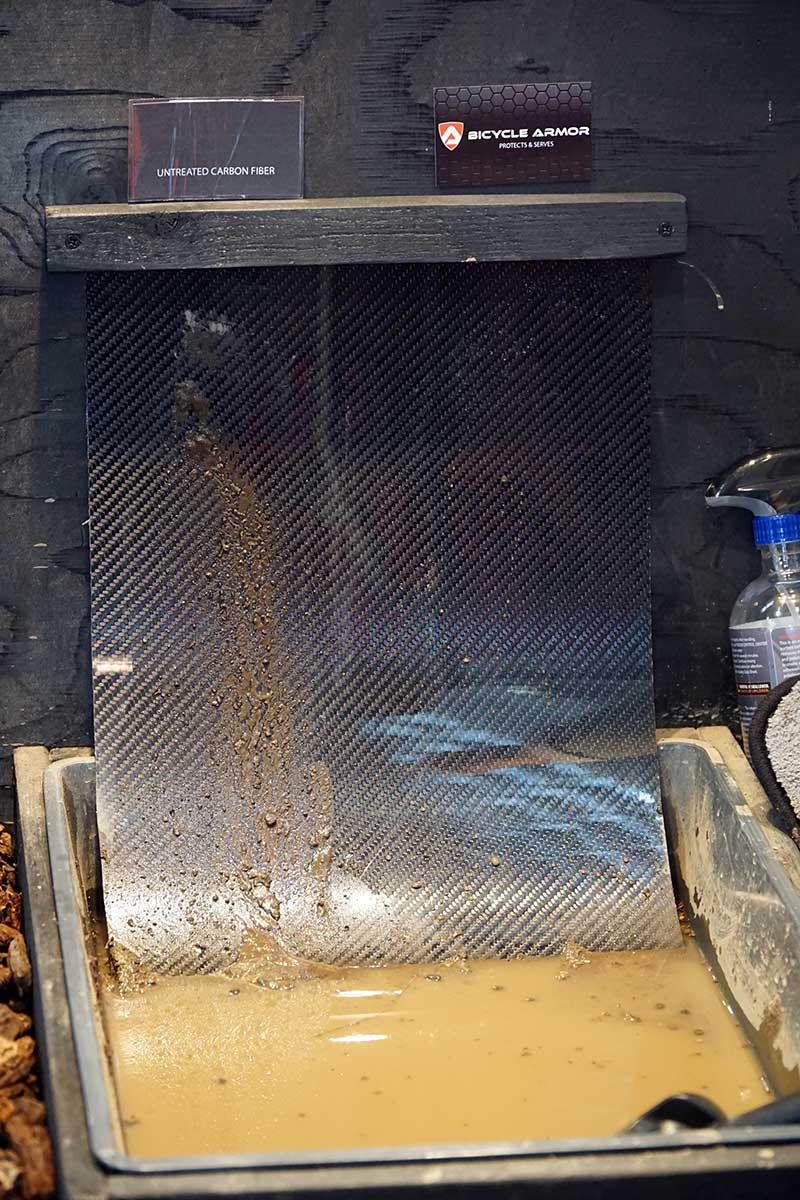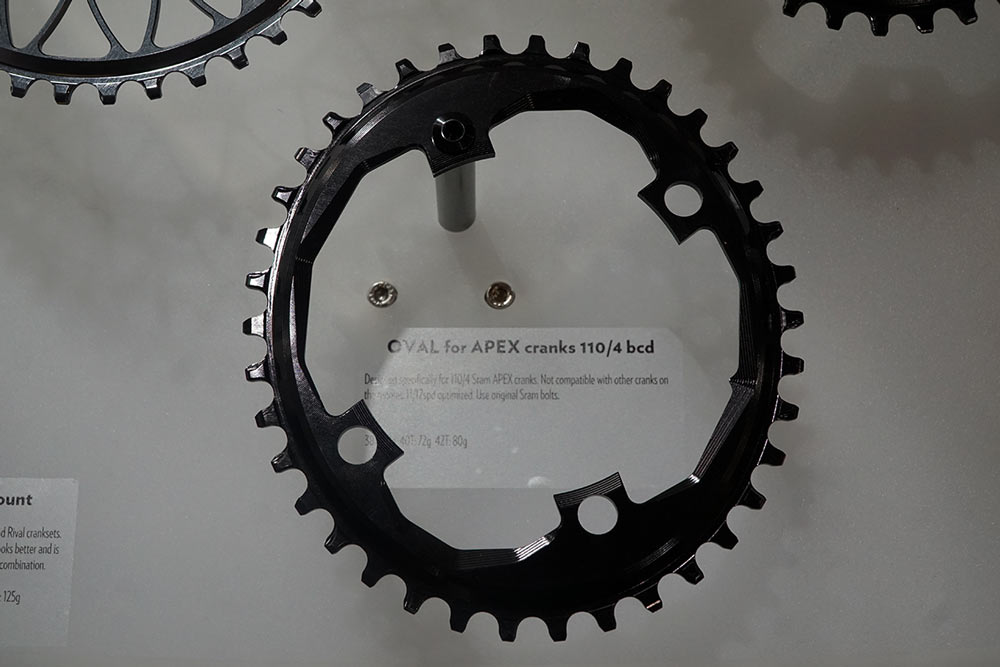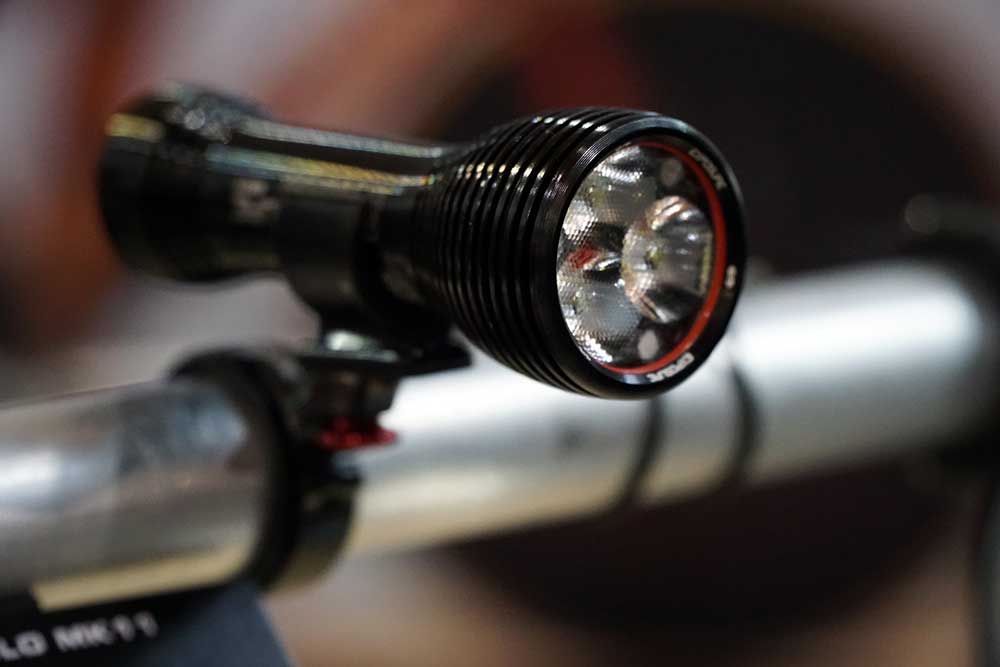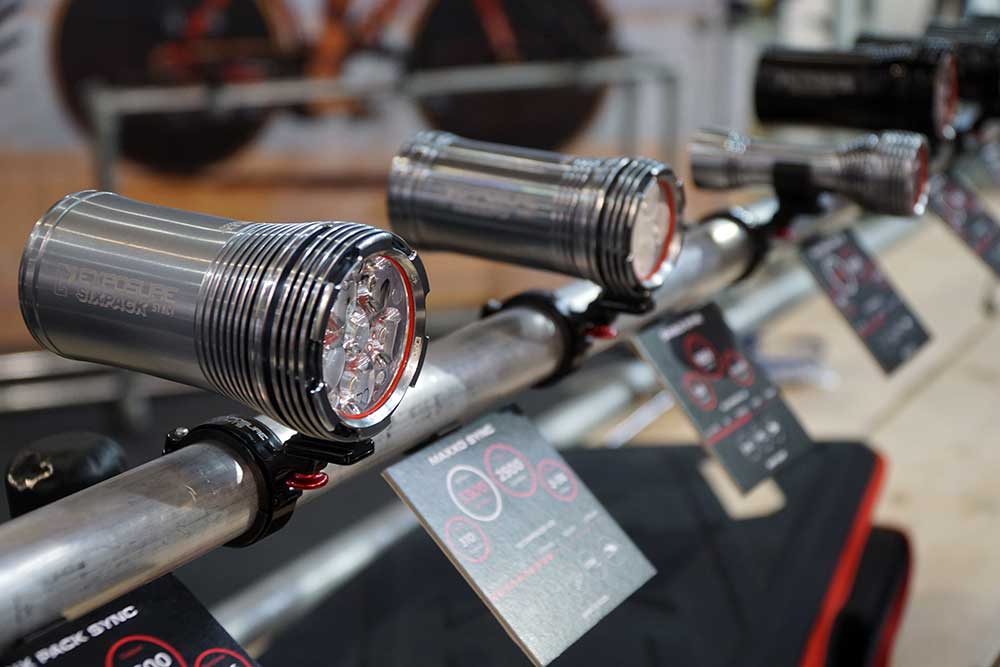Want to measure your drag coefficient in real time? And analyze the data afterward? Now, finally, you can with the Notio Konect. First shown here two years ago, the device has since spun off from Argon18 as a standalone company and is finally ready with retail packaging and products.
By using a combination of six built-in sensors (air speed, accelerometer, gyroscope, temperature, humidity, and barometric pressure), it’s able to calculate your CdA and spit out a number to compatible head units. And their app, which records the data and spits out a big graph after your ride to help you analyze when, where and how your aerodynamics changed.
Want to see how much of a difference your body position makes? Or those new wheels? This will tell you. It’s not the only one on the market (check out this and this), but it seems to have the most comprehensive ecosystem to help you use the data. Retail is $950, available now at Notio.ai.
What’s inside Cane Creek’s solid bearing tech?
Cane Creek’s Hellbender bottom bracket debuted just before the show, but they had these sweet cutaways on hand to show how the SKF solid bearing technology works.
A traditional bearing uses a (often metal) race to keep the balls in place, which in itself can add drag to the system. The solid polymer does that job instead, and since it’s infused with a slippery lubricant, it serves to keep everything rolling smooth as the balls spin inside it.
But won’t it wear down? Not really, because it’s enclosed in the outer bearing race seals, the lube that “leaks” out of the microscopic pores stays in there, preventing it from wearing down. And, should you decide to pull it out and wipe it down, it’ll just re-lube itself as soon as you start spinning again. So unless you do that all the time, it should last for a very, very long time.
But how to they get the bearings in there? Good question. The balls are set in place while the material is poured into the mold as a hot liquid. As it starts to set, the structure holding the balls into place is removed and the MTRX polymer cures, hardens, and holds them in place. Very cool. Check out the full specs and options in this post.
Bicycle Armor makes the mud slip right off your bike
With wind drag and bearing drag taken care of, it’s time to get rid of mud. Because that’s a drag, too. Especially when it’s weighing down your cyclocross, gravel or mountain bike during a race. Bicycle Armor has the solution. Or, rather, several solutions that come in a bottle and are applied in steps at your local authorized bike shop. It’s a clear, gloss-free, ultra-hard nano ceramic coating that can last up to six years.
Basically, it creates an ultra-smooth protective layer on your frame, cable housing, rims, hubs, and anything else that’s a non-porous surface, so nothing will stick to it. It’s chemical, heat and sweat resistant, too.
They’re only selling the kit to shops. Their buy-in includes training and detailing of one bike, plus the goods to clean, prep and treat up to 20 bikes. Expect it to cost $150-$250 to treat your bike depending on the shop’s labor rate, whether you want the 3- or 6-year protection (they use different products), etc.
absoluteblack delivers 12-speed oval chainrings
Well, for now, they’ll work with Shimano 12-speed chains anyway. They’re (probably) working on SRAM FlatTop chain compatible versions, but for now you’ve got plenty of options. There are rings for direct-mount Race Face, SRAM and Shimano, plus XT M8000 4-bolt and standard 104BCD 4-bolt. Tooth counts range from 28-36 depending on model.
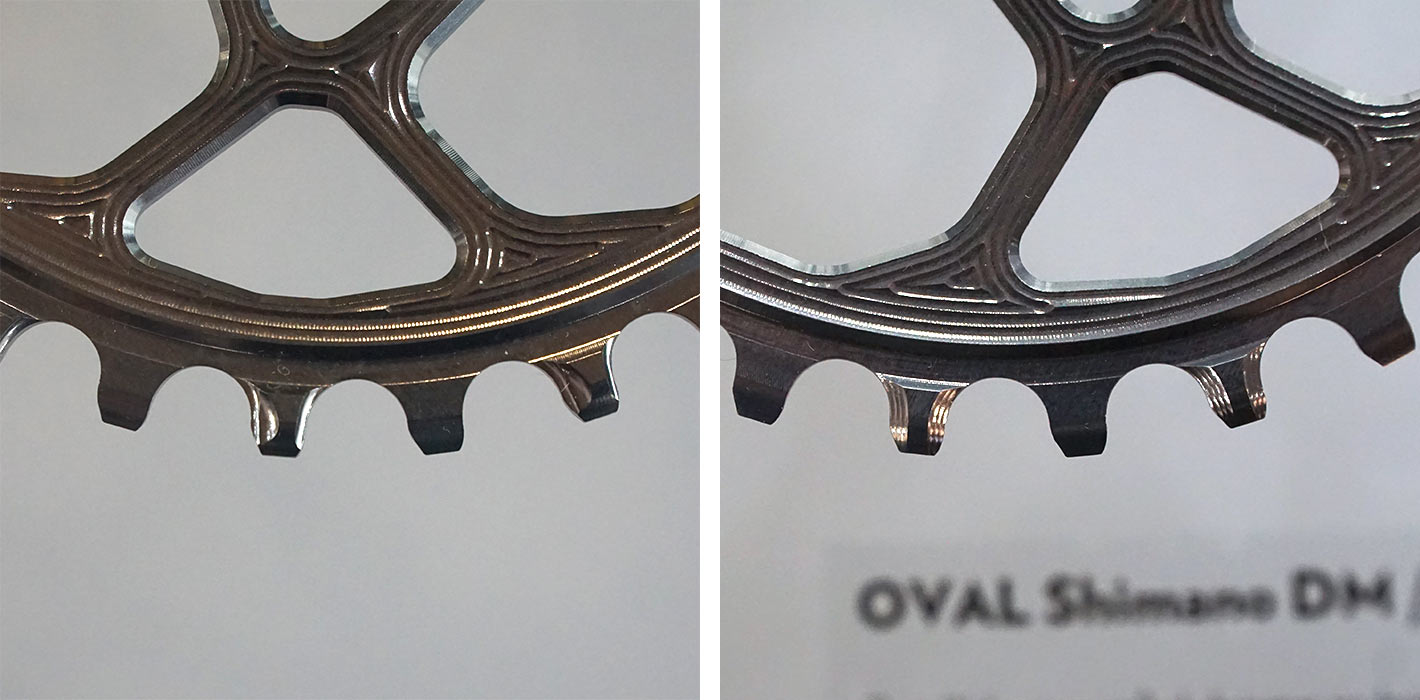
What’s the difference? The wide tooth’s profile has been revised to fit better inside Shimano’s 12-speed mountain bike chains.
They also have a new oval chainring specifically for SRAM Apex’s 110/4 BCD mounting pattern. Check out the full collection at absoluteblack.cc.
Full Exposure to clever lighting technology
Exposure has been making big lights for years, and like virtually every brand, they keep getting brighter. So it takes more than lumens to catch our eyes. The latest Six Pack MK10 (which gets bumped to 5,000 lumens max) has their latest Reflex+ technology, which does some amazing things for you while riding.
Using a combination of thermal and accelerometer sensors, the light knows when you’re moving and how fast. Go faster, and it’ll get brighter. Start climbing, and it’ll dim to save power while you’re going slow. Start the descent and it’ll get brighter (a LOT brighter) so you can see where you’re going at speed.
Even better, the latest version will slowly dim once you come to a stop to wait for your friends with less intelligent lights. So, when they arrive, you won’t blind them (they’ll probably still blind you, though). As soon as you start moving again, it’ll immediately jump back to your desired brightness.
Lastly, you can program the lights to different levels at different settings. Or, set it based on ride time so it’ll automatically figure out how bright to max out at so the battery lasts for the duration of your ride.
The smaller Diablo MK11 gets bumped to 1,750 lumens. At just 120g, it’s a perfect helmet light.
Both of those, and the Maxxo (center), now have Sync versions. With the included two button remote, you can sync the lights to either work in unison with both buttons, or set one button to control one light, and the other for the another light.
The back of your bike gets smart, too. The Blaze Reakt Peloton can sense when you’re slowing down and act as a brake light. And, if you’re in a peloton, it can detect a light right behind you and dim to a steady on setting so it’s not distracting the paceline behind you. Output maxes out at 150 lumens for the brake light, 80 lumens for standard use, and weight is just 77g. £115 for the top model with all the features. Check them all out at ExposureLights.com. They’re a UK brand, so if you’re having trouble finding them Stateside, check their Amazon store, which has some deals on prior generation models, too.
Stay tuned for more new tech from Eurobike 2019!
